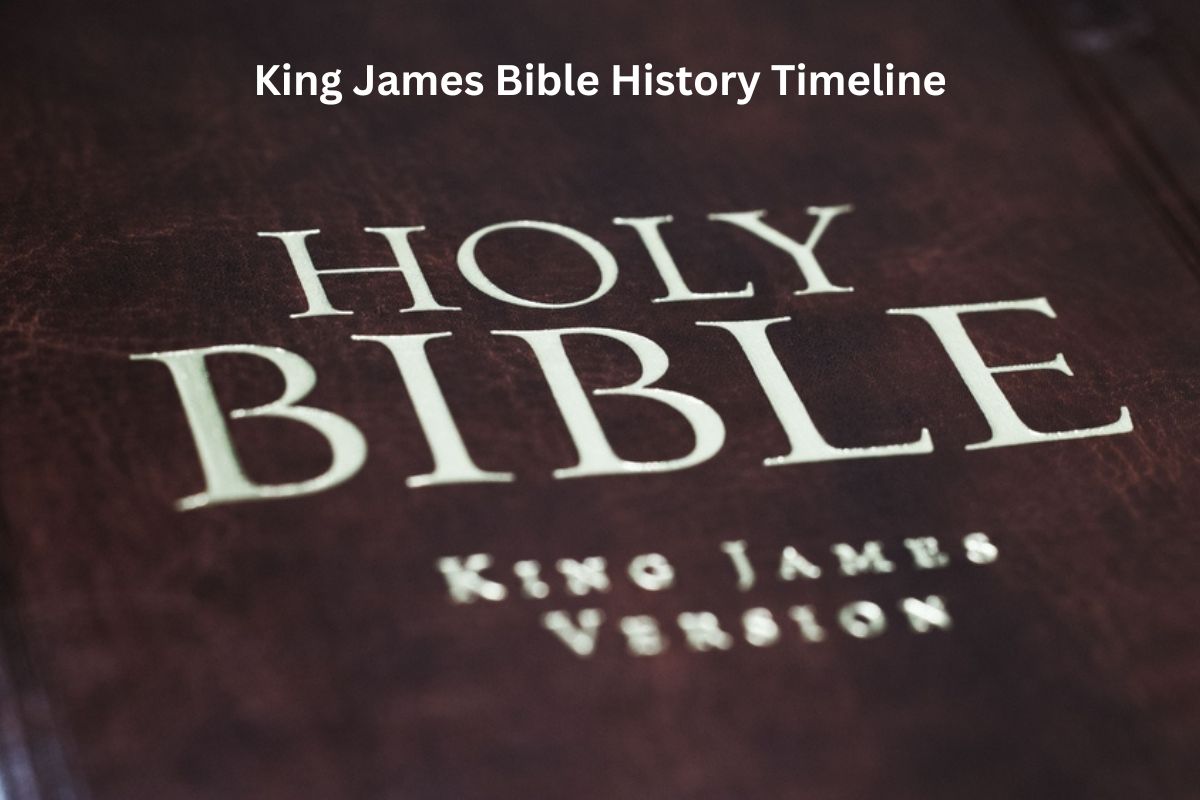The King James Bible, also known as the Authorized Version, is a timeless and influential translation of the Bible into English.
Its history spans back to the early 17th century when it was commissioned by King James I of England.
This translation, completed in 1611, has left an indelible mark on both religious and literary history.
In this overview, we will delve into the key events and impacts associated with the King James Bible, from its inception to its enduring legacy in the 21st century.
| Year | Event Description |
|---|---|
| 1604 | Hampton Court Conference convenes |
| 1605-1611 | Translation process begins and completes |
| 1611 | First edition of the King James Bible published |
| 17th Century | Widely adopted in England and its colonies |
| 18th-19th Century | Remains the primary English Bible translation |
| 20th Century | Other English translations gain popularity |
| 21st Century | Continues to be used by traditionalist groups |
Timeline of the King James Bible
1604 – Hampton Court Conference convenes
In 1604, King James I of England convened the Hampton Court Conference, a significant event in the history of the King James Bible.
The conference was called to address various issues within the Church of England, particularly concerning religious matters and the perceived inadequacies of existing English translations of the Bible.
Also Read: Facts About the King James Bible
One of the major outcomes of this conference was the decision to create a new English translation of the Bible that would be more accurate, consistent, and acceptable to the Church.

1605-1611 – Translation process begins and completes
Following the Hampton Court Conference, the translation process for what would become the King James Bible began in 1605.
King James I appointed a team of 54 scholars and theologians to work on this ambitious project. These scholars were divided into six groups, each responsible for a specific portion of the Bible.
Also Read: Oliver Cromwell Facts
The translation work continued for several years, involving meticulous study of the original Hebrew and Greek texts for the Old and New Testaments, respectively.
The translation was completed in 1611, resulting in the first edition of the King James Bible, often referred to as the “Authorized Version.”
1611 – First edition of the King James Bible published
The first edition of the King James Bible was published in 1611. It was dedicated to King James I, who had commissioned the translation.
This new translation aimed to provide a standardized and authoritative English text for the Bible. It was intended to be used in the Church of England and throughout the English-speaking world.
The King James Bible quickly gained recognition for its eloquent and majestic language, and it became the standard English translation of the Bible for centuries to come.
Over time, it not only played a pivotal role in religious practices but also left an indelible mark on the English language, literature, and culture.
17th Century – Widely adopted in England and its colonies
During the 17th century, the King James Bible became widely adopted in England and its overseas colonies, including the American colonies.
Its adoption was facilitated by the English government and the Church of England, which promoted the use of the King James Bible in churches and schools.
The accessibility and widespread use of this translation contributed to its acceptance as the standard English Bible.

18th-19th Century – Remains the primary English Bible translation
Throughout the 18th and 19th centuries, the King James Bible retained its status as the primary English translation of the Bible.
Many churches and denominations, including non-conformist groups and evangelical movements, continued to use the King James Version for religious worship, study, and memorization.
Its influence extended beyond religious circles, impacting English literature, idioms, and culture, making it a central text in the English-speaking world.
20th Century – Other English translations gain popularity
In the 20th century, other English translations of the Bible gained popularity, challenging the dominant position of the King James Version.
One notable translation was the Revised Version of 1885, which aimed to provide a more accurate and updated rendering of the Bible texts.
The mid-20th century saw the emergence of translations like the New International Version (NIV) in 1978, which used modern language and sought to make the Scriptures more accessible to contemporary readers.
21st Century – Continues to be used by traditionalist groups.
In the 21st century, the King James Bible continues to be used by traditionalist Christian groups and individuals who appreciate its historical significance and literary beauty.
Despite the availability of numerous modern translations, some churches and denominations, especially within the Anglican and some Protestant traditions, maintain the King James Version as their preferred or exclusive Bible translation.
The King James Bible remains an object of study and fascination due to its historical, linguistic, and cultural importance, ensuring its enduring legacy in the English-speaking world.
